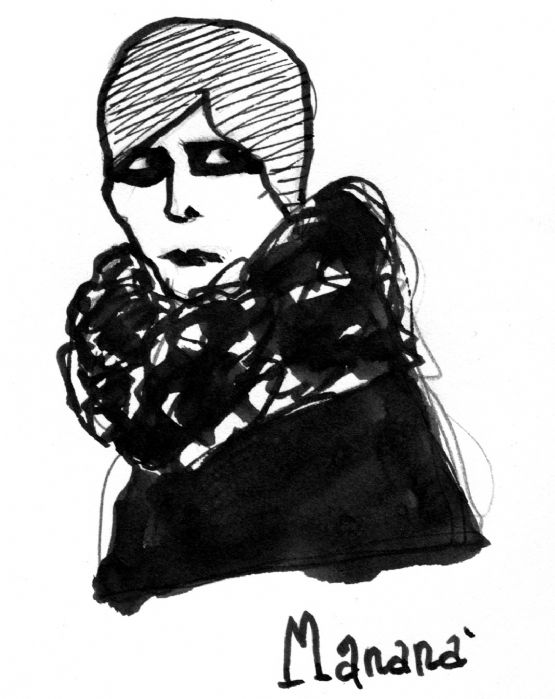
Portrait of Mananà Pignatelli by talented illustrator and friend Vanna Vinci
I’ve found really very few informations about Anna Maria dei principi d’Aragona Pignatelli di Terranova di Cortes, also known as Mananà (1894-1960). Just only one picture of her reveals me her face and it was intriguing enough to keep me searching for more. She was very popular in the internation jet set during 1920’s in Italy and especially Roman ambient.
A dark Princess
According to Dario Cecchi, who wrote the book “Coré. Vita e dannazione della Marchesa Casati” : “Mananà always dressed in back, has really short hair and used to wear brimless cloche black hats. Even her apartment curtains were black, her sheets and probably also her underwear”. Dario Cecchi talks about Mananà because she was often mistook for Marchesa Casati because of her black make-up and paleness. As he could remember, she was a sculptress of huge giants, that could be seen through the windows of her apartment in Rome, near Villa Borghese, the same apartment where he lived with his family.
The reason of her black dressing and make up, according to Indro Montanelli who was a friend of her, seems to be due to the success she met when, once in a masket ball in Paris, she dressed up like a pierrette. Everybody appreciated her costume so much that she decided she wanted to be dressed like a pierrette everyday. His husband, Marquis Guido Sommi Picenardi, seemed to appreciate it too. Montanelli says that one day he was invited by Mananà and his husband to spend some days in their Villa Torre de’ Picenardi near Cremona and he found a bed with black sheets and black mattress. Someone said that Mananà used to sleep in a coffin surrounded by tapers and incense.
The Marriage
Mananà and Guido married in 1917 in the chapel of their Villa in via Piemonte in Rome. The marriage was also reported on “Le Figarò”. In the same year Mananà was portrayed more than once by painter Adriana Bisi Fabbri, a relative of Boccioni, who died the next year. The couple was very famous in that period in Rome, they attended all the best parties and were friends of artists like Gabriele D’Annunzio, Tamara de Lempicka and all the personalities around the Ballets Russes, for which Guido wrote numerous ballets and pantomimes. The Marquis Guido was an eclectic noble man who dabbled in music, writing and theatre and was a close friend and maybe lover of Tamara de Lempicka, who painted some portrait of him. It was Mananà to introduce Gabriele d’Annanzio to Tamara de Lempicka in 1926.
Lempicka described the couple in the following terms: “Mananà and Guido Sommi Picenardi, whose bohemian ways would now be labelled as somewhat “hippy”, spearheaded a young and brilliant circle of friends kept busy every night by parties, operas, ballets, music and dinners in private palaces with uniformed staffs. On these occasions, the women were beautifully dressed and covered with jewelry; the men were all very handsome and elegant. The conversations were most cultivated and witty.”
Lempicka’s portrait of Guido shows his elegance and composure and, even if a little cold, a real dandy. It seems he was interested in occultism, transvestism and famous were his several love affairs. It also seems that Mananà started to drift apart from him for his eccetricities. Guido went back to Torre de’ Picenardi where he died in 1949 in unclear circumstances.
The Sculptress
After Guido’s death, Mananà started a relationship with Guidone Parisini, an ex cavalry officer who was able to talk only about equestrian shows and competition. Totally the opposite of Guido. They moved to Capri and then to Venice, where she could vent her artistic side starting to sculpt. She lived and worked only by night, as Montanelli says, and her favorite subjects were big muscolar men. It seems that Federico Zeri, famous italian art historian, wrote a critical essay about Mananà’ s art, but I couldn’t find anything.
Rumors says that Mananà died in Venice, where she lived in Palazzo Mocenigo, drowned in the Canal Grande. I don’t know if this is true. Indro Montanelli is quite annoyed talking about Mananà, he hated D’Annunzio and D’annunzio-alike-people and believes that Mananà was nothing more than a mask. I wonder where her works are now and why seems impossible to find anything about this strange and flamboyant figure. Today the only person still interested in Mananà, that I was able to find, seems to be GiovanBattista Brambilla who wrote about Pignatelli family.
If anyone can give me more informations about Mananà please contact me.
****
FONTI/SOURCES
Indro Montanelli
Il giornalista risponde ad un lettore (proprio GiovanBattista Brambilla) nella sua rubrica La Stanza, il 25 giugno del 1997. Articolo intero qui.
“…Manana’ Pignatelli Aragona Cortes non interessa che lei e una dozzina di altre persone. Esso appartiene infatti a un mondo che, sebbene sia soltanto quello dei nostri padri (che per lei, immagino, sono nonni), sembra lontano alcuni secoli dal nostro: il mondo dannunziano, fatto soltanto di esclamativi e di “patacche”. All’autore di “Alcyone” e del “Poema paradisiaco” (il resto, romanzi, teatro, ecc., non si perde molto, secondo me, a dimenticarlo) si possono perdonare molte cose. Al dannunzianesimo, nulla: fu il trionfo del fasullo (e dio sa se in Italia ce n’era bisogno), una peste, una lebbra. Manana’ fu una delle sue vittime. E lo dico con dispiacere perche’ fu mia amica, le volli bene e mi volle bene. Erede in linea diretta non solo dei principi Pignatelli, ma anche del grande conquistador del Messico, essa apparteneva al dorato jet – set cosmopolita degli inizi del secolo, quando le capito’ di partecipare a una grande festa mascherata a Parigi, punto di raccolta di quella societa’. Vi si presento’ truccata da Pierrette con la zazzerina a gronda sulla fronte e il volto interamente coperto da una patina di biacca. Ebbe un tale successo che non volle piu’ abbandonare questa cosmesi, nemmeno quando gli anni cominciarono a farlesi sentire. Io, che pure per un certo periodo l’ho molto frequentata, non l’ho mai vista che con la zazzerina incanutita sul volto di gesso, a tutte le ore del giorno e anche della notte, perche’ solo di notte lei viveva. Cosi’ d’altronde la voleva anche suo marito, Guido Sommi Picenardi, altro dannunziano doc, ricco di talenti (letteratura, teatro, musica) coltivati da raffinato dilettante, e per questo incompiuti. Una volta che m’invitarono a un soggiorno nella loro famosa Torre, mi misero a dormire in un letto foderato di lenzuola di seta nera che sembrava una bara. Superstizioso come sono, buttai via le lenzuola, ma anche il materasso era nero, come lo era tutto il decor di quella casa che sembrava uscita dalla fantasia di un impresario di pompe funebri. Dopo la morte del marito, Manana’ si scelse per compagno la sua antitesi umana: Guidone Parisini era un ex ufficiale di cavalleria che s’intendeva e parlava solo di stalle e di concorsi ippici. Si ritirarono prima a Capri, poi a Venezia, dove lei, sempre addobbata da Pierrette, dette sfogo alla sua passione, la scultura. Minuta e delicata com’era, non raffigurava che omaccioni erculei, di cui non saprei che valore artistico avessero. Viveva e lavorava, come sempre, solo di notte in stanze abbuiate da tende scure come quelle di cui era decorato il Vittoriale di D’Annunzio, regno del fasullo mortuario. Ecco tutto quello che posso dirle di Manana’.”
Dario Cecchi
estratto dal libro “Coré. Vita e dannazione della Marchesa Casati”, L’inchiostroblu editore, 1986.
“Invariabilmente vestita di nero, capelli cortissimi sempre nascosti entro una calottina di feltro nero senza tesa, Mananà aveva alle finestre tendaggi neri, nel letto, lenzuola nere, e nera probabilmente sarà stata anche la sua biancheria personale. Scolpiva dei titani giganteschi, tormentati e libidinosi, che si potevano intravedere attraverso le inferriate delle basse finestre, dall’esterno.”
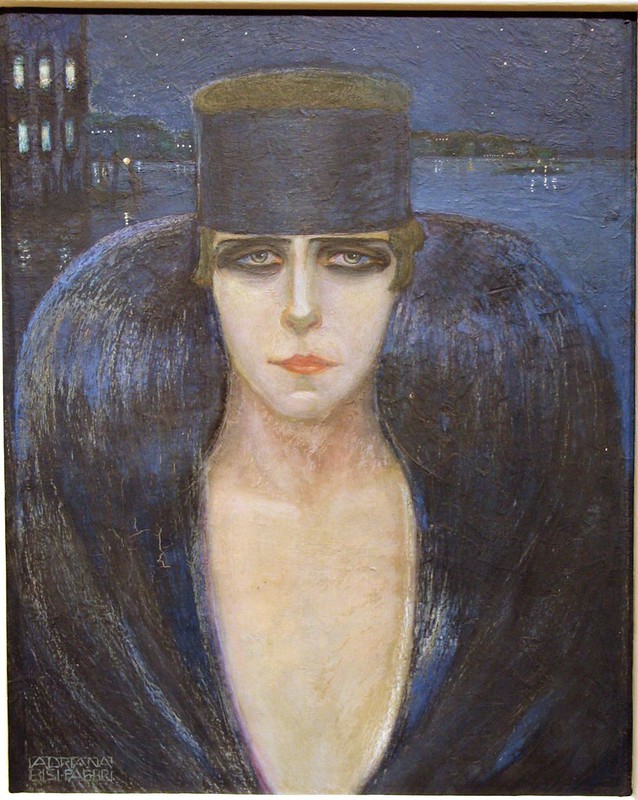
La marchesa Pignatelli by Adrani Bisi Fabbri, 1917 (Museo del Paesaggio, Verbania)
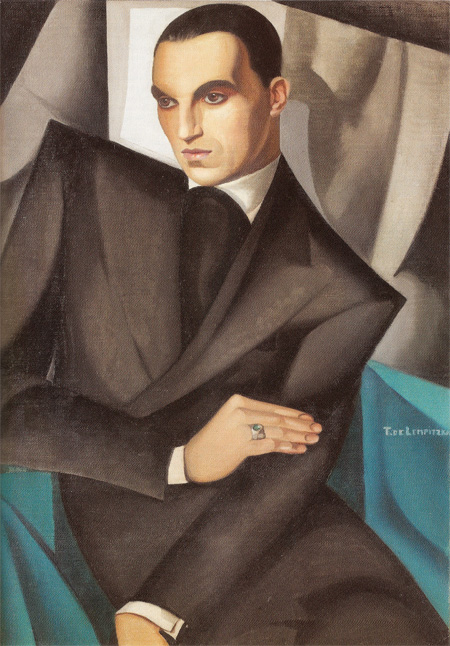
Portrait of Marquis Sommi by Tamara de Lempicka, 1925
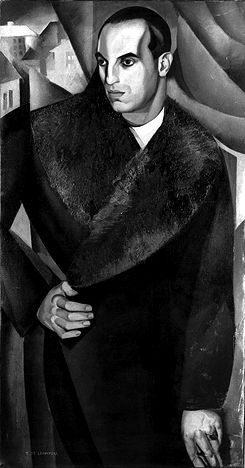 Portrait of Guido Sommi by Tamara de Lempicka, 1925
Portrait of Guido Sommi by Tamara de Lempicka, 1925

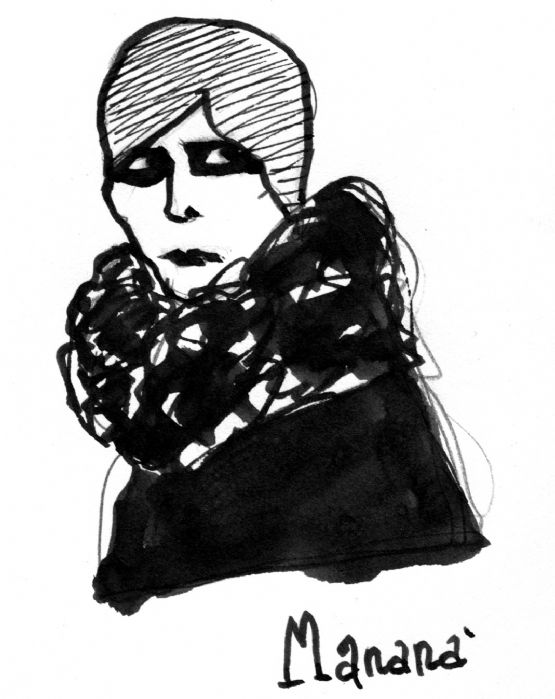
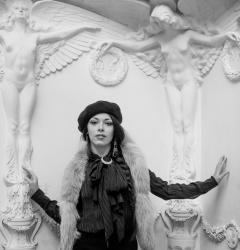

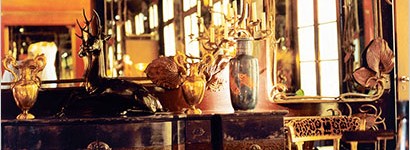
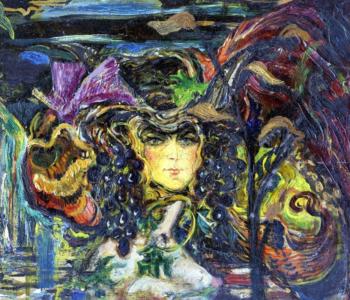
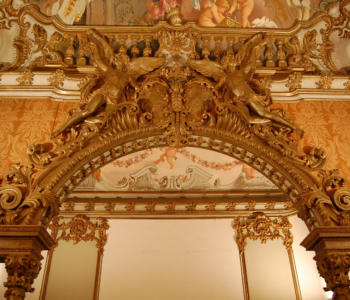
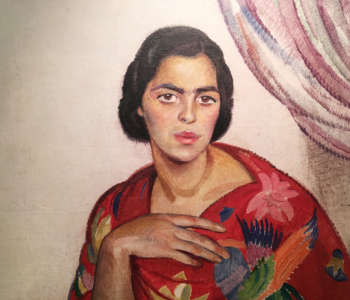
3 Commenti a “Mananà Pignatelli”
Your research of Manana Pignatelli is impressive, Rocaille. The Princess intrigued me when I found a photo of her in a mid-twentieth century Life magazine. Dressed in her sleeveless, black pierrette jumpsuit, wearing high black platforms, a black cloche on her head, eyes rimmed and blackened up to the brow – she is seated next to an enormous sculpted goddess – and Manana is hugging a small dog… there at Capri.
Thank you for this great post.
And thank you for your precious finding!
It took me quite time to find these few informations about this incredible lady, but it worth the effort! That’s why you’re lucky to have found a picture of her, they’re very rare!
Trackbacks per le News